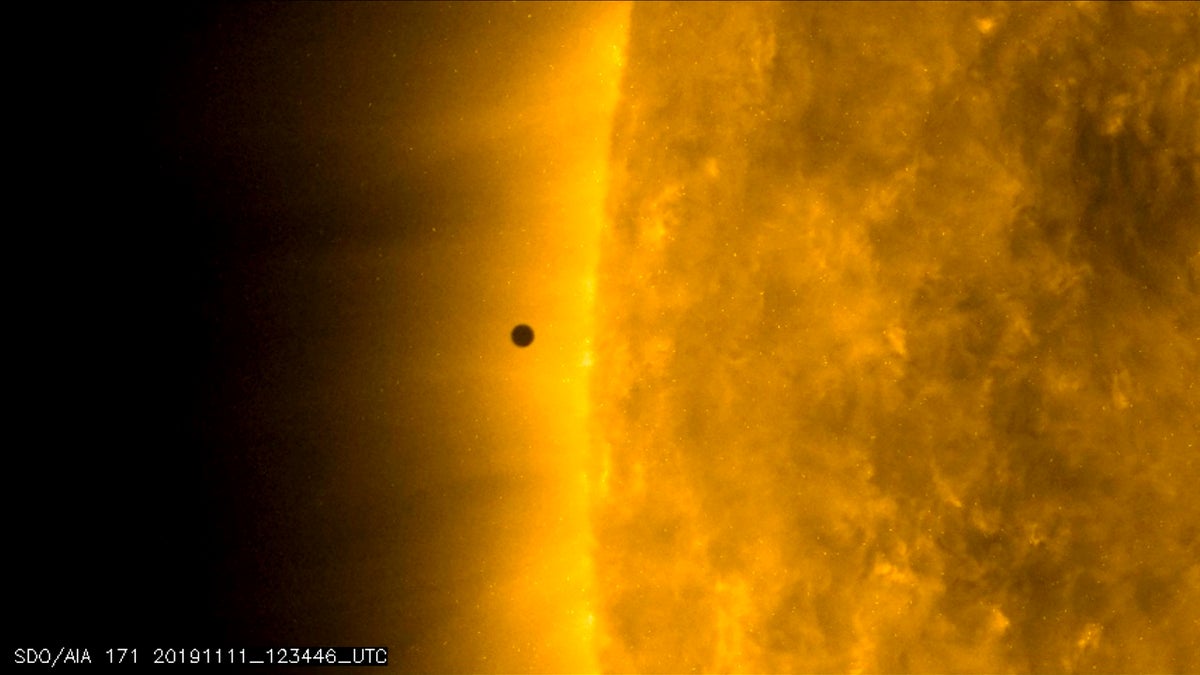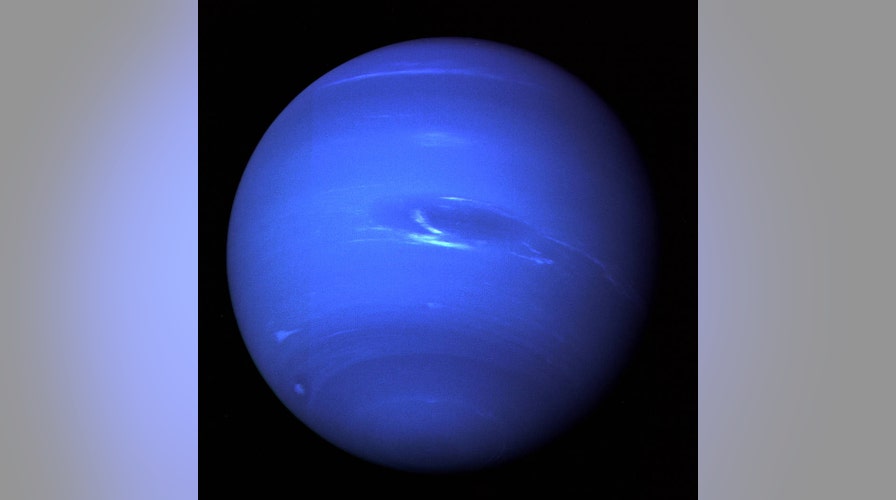Fox News Flash top headlines for Feb. 27
Fox News Flash top headlines are here. Check out what's clicking on Foxnews.com.
Two of the most mysterious planets in our solar system are Uranus and Neptune. These planets are also known as ice giants, due to their intermediate-mass and size which suggests an ice-rich composition.
Only one spacecraft has made the trip to the two farthest planets — Voyager 2, which flew past them in 1986 and 1989, respectively. A new study published in the journal Monthly Notices of the Royal Astronomical Society may reveal how these two planets, often mistakenly thought of as “twin” planets, differ.
“In principle, the planets in our solar system can be divided into three different classes: the terrestrial (rocky) planets which are closest to the Sun, the two gas giants Jupiter and Saturn farther out, and the outer ice giants Uranus and Neptune at the outer edge of the solar system,” study co-author Dr. Christian Reinhardt told Fox News. “Although each planet in the solar system has unique features, in some way the planets within one class are more similar to each other and clearly different from the others.”
EXTRATERRESTRIAL LIFE ON EUROPA OR ENCELADUS COULD BE 'INDIGENOUS,' STUDY SAYS
Here is an in-depth look at how the planets in the solar system were formed and what their differences are.

This still image from video issued by NASA's Solar Dynamics Observatory shows Mercury as it passes between Earth and the sun.The solar system's smallest, innermost planet resembles a tiny black dot during the transit. (NASA Solar Dynamics Observatory via AP)
THE TERRESTRIAL PLANETS
The four “terrestrial” planets – Mercury, Mars, Venus and Earth – are closest to the Sun and have rocky surfaces with cores made of iron and nickel.
“It is most commonly believed that the terrestrial planets formed in the inner part of the solar system relatively late so they could not obtain a substantial amount of primordial hydrogen and helium before the gas disk surrounding the young Sun was dissipated,” Reinhardt said.
“Farther out the disk was cooler and volatile elements like water were in solid form (ice) which allowed the gas giants to form earlier, before the disk was gone, and accrete large amounts of gas," Reinhardt added.
WATER SPOTTED IN JUPITER'S ATMOSPHERE
THE GAS GIANTS
Jupiter and Saturn are made mostly of hydrogen and helium that is believed to surround a core of icy rock, according to Space.com. Both are also similar in size, with Jupiter’s radius 11 times the size of Earth’s and Saturn’s radius nine times that of Earth.
Both planets also rotate very quickly — one day lasts 10 hours on Jupiter and 11 hours on Saturn.
Although it is uncertain how the planets formed, a study published in 2017 found that during their early formation, these planets may have had oceans.

This July 23, 2008 file image made available by NASA shows the planet Saturn, as seen from the Cassini spacecraft. Twenty new moons have been found around Saturn, giving the ringed planet a total of 82, scientists said Monday, Oct. 7, 2019. (NASA/JPL/Space Science Institute via AP, File)
THE ICE GIANTS
Neptune and Uranus are the two planets farthest from the sun. They differ from gas giants as they're smaller and are likely composed of a mixture of rocks and ice (water, methane, ammonia) and consist of massive small hydrogen-helium atmospheres. Both are also extremely cold, with the average temperature on Neptune hitting -380 degrees Fahrenheit.
They may be mistaken for twins but they are rather different, Reinhardt added. “Uranus and Neptune are not ‘twin planets’ — they differ in their tilt, satellite system and measured heat flux. The origin for this dichotomy is unknown, and in our study we showed that the differences could be a result of giant impacts — very energetic collisions on the young planets.”
NASA AIMS TO PROBE MYSTERIOUS ATMOSPHERES OF URANUS AND NEPTUNE
Unlike Neptune and Earth, Uranus and its moons are tilted nearly 97 degrees into the solar plane. Uranus also rotates around the Sun in the opposite direction of the other planets.
Using state-of-the-art 3D computer simulations, the researchers believe that sometime after the planets were formed, a planetary “embryo” with a mass between one and three times that of Earth struck each planet, resulting in their different tilts.
“The impactors are 1-3 Earth mass objects,” Reinhardt explained, “and could be referred as ‘planetary embryos’ which are expected to exist at early times, shortly after the formation of the planets (when impacts were rather common due to the existence of such embryos).”
The idea that some kind of impact may have caused these differences in Neptune and Uranus is not new, but the researchers were amazed to find the simulations supported this scenario.
“Another interesting finding was, that Uranus’ regular moons, like Earth’s Moon, might have formed from debris ejected during the impact,” Reinhardt explained. “The moon’s composition can only be matched if the projectile that hit Uranus contains a substantial amount of rock which in turn provides constraints on the collision.”




















